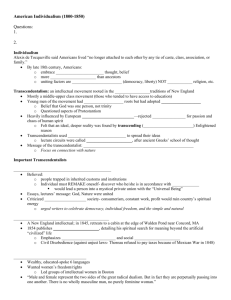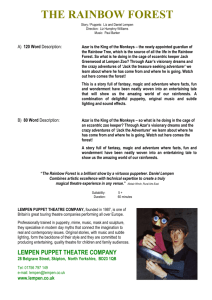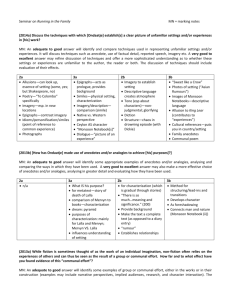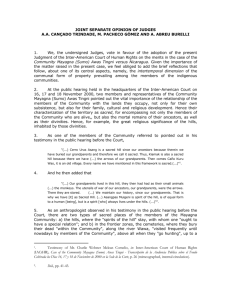Edward E Azar – A Theory of Protracted Social Conflict
advertisement
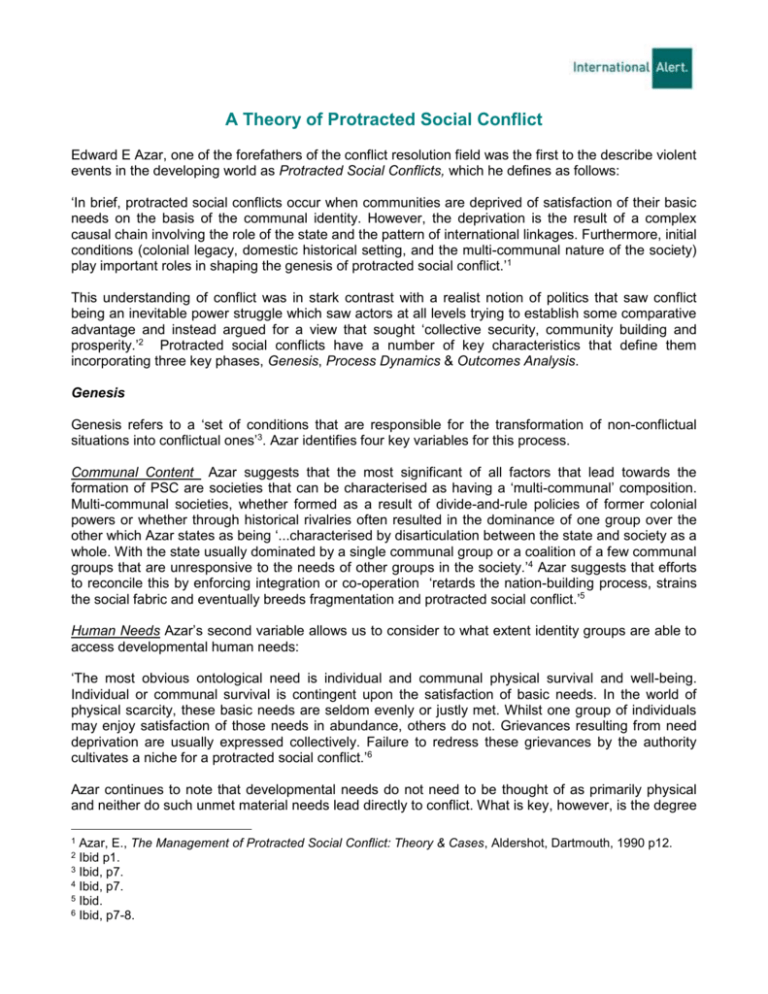
A Theory of Protracted Social Conflict Edward E Azar, one of the forefathers of the conflict resolution field was the first to the describe violent events in the developing world as Protracted Social Conflicts, which he defines as follows: ‘In brief, protracted social conflicts occur when communities are deprived of satisfaction of their basic needs on the basis of the communal identity. However, the deprivation is the result of a complex causal chain involving the role of the state and the pattern of international linkages. Furthermore, initial conditions (colonial legacy, domestic historical setting, and the multi-communal nature of the society) play important roles in shaping the genesis of protracted social conflict.’1 This understanding of conflict was in stark contrast with a realist notion of politics that saw conflict being an inevitable power struggle which saw actors at all levels trying to establish some comparative advantage and instead argued for a view that sought ‘collective security, community building and prosperity.’2 Protracted social conflicts have a number of key characteristics that define them incorporating three key phases, Genesis, Process Dynamics & Outcomes Analysis. Genesis Genesis refers to a ‘set of conditions that are responsible for the transformation of non-conflictual situations into conflictual ones’3. Azar identifies four key variables for this process. Communal Content Azar suggests that the most significant of all factors that lead towards the formation of PSC are societies that can be characterised as having a ‘multi-communal’ composition. Multi-communal societies, whether formed as a result of divide-and-rule policies of former colonial powers or whether through historical rivalries often resulted in the dominance of one group over the other which Azar states as being ‘...characterised by disarticulation between the state and society as a whole. With the state usually dominated by a single communal group or a coalition of a few communal groups that are unresponsive to the needs of other groups in the society.’4 Azar suggests that efforts to reconcile this by enforcing integration or co-operation ‘retards the nation-building process, strains the social fabric and eventually breeds fragmentation and protracted social conflict.’5 Human Needs Azar’s second variable allows us to consider to what extent identity groups are able to access developmental human needs: ‘The most obvious ontological need is individual and communal physical survival and well-being. Individual or communal survival is contingent upon the satisfaction of basic needs. In the world of physical scarcity, these basic needs are seldom evenly or justly met. Whilst one group of individuals may enjoy satisfaction of those needs in abundance, others do not. Grievances resulting from need deprivation are usually expressed collectively. Failure to redress these grievances by the authority cultivates a niche for a protracted social conflict.’6 Azar continues to note that developmental needs do not need to be thought of as primarily physical and neither do such unmet material needs lead directly to conflict. What is key, however, is the degree 1 Azar, E., The Management of Protracted Social Conflict: Theory & Cases, Aldershot, Dartmouth, 1990 p12. Ibid p1. 3 Ibid, p7. 4 Ibid, p7. 5 Ibid. 6 Ibid, p7-8. 2 to which minority groups can access the market or political institutions or the recognition of communal existence. This then leads to us having a much more broad understanding of human needs that if unmet, may become causal variables which will be attempted to be readdressed by violence. Government and the States Role Azar’s third variable turns its attention to the role of the state and its role in ensuring that all communal groups under its jurisdiction are able to meet their basic human needs. Azar notes that in those countries that are experiencing protracted social conflict, political power tends to be dominated by one identity group that uses its resources to maintain power over the other. In turn, to ensure that the group in power remains so, PSC-affected countries will often see attempts by the dominant group to resist participation of minority groups. Azar concludes with his note that, ‘such crises exacerbate already existing competitive or conflictive situations, diminish the states ability to meet basic needs, and lead to further developmental crises. Thus regime type and the level of legitimacy are important linkage variables between needs and protracted social conflict.’7 International Linkages Azar’s fourth variable points to the role of how it not simply governance at the state level that leads to communal groups being unable to access basic human needs, security or recognition but the extent to which internal policy is dictated by international linkages. Azar categorises two distinct forms in which these international linkages can take; economic dependency and client relationships. States which are economically dependent on the broader international economic system, in turn see their autonomy weakened as economic development policies are part dictated by outside influences. Azar goes further to note, 'Moreover, dependency often exacerbates denial of the access needs of communal groups, distorting the domestic political and economic systems through the realignment of subtle coalitions of international capital, domestic capital and the state.’8 Client relationships, referring to arrangements whereby a states security is guaranteed in return for loyalty can be equally significant with governments potentially distracted from their key responsibilities, ‘ Client loyalty and obedience involved some sacrifice of autonomy and independence, which induces the client state to pursue both domestic and foreign policies disjointed from, or contradictory to, the needs of its own public.”9 Process The second component of PSC is that of process dynamics, variables which, given the preconditions mentioned previously, are responsible for the activation of overt conflict. Azar recognises three key determining factors: Communal Actions and Strategies This refers to the potential of various ‘triggers’ which activate otherwise latent conflict, which then escalate into broader and possibly more violent conflict. Azar summarises this process as follows: ‘Initially, a trigger may, but not need be, a trivial event (e.g., an insult to an individual with strong communal ties). But the trivial event tends to become a turning point at which the individual victimization is collectively recognised. Collective recognition of individual grievances (or incompatible goals) naturally leads to collective protest. Collective protest is usually met by some degree of repression or suppression. As tension increases, the victimised communal groups begin to draw the attention of their constituents not only to the event itself, but also to a broad range of issues involving communal security, access and security needs (e.g. selective poverty and political inequality). The spill over of the event into multiple issues increases the momentum for organising and mobilizing 7 Ibid, p11. Ibid. 9 Ibid. 8 resources. As the level of communal organisation and mobilization becomes greater, communal groups attempt to formulate more diverse strategies and tactics, which may involve civil disobedience, guerrilla warfare or secessionist movements.’10 The extent to which this escalates is in-part influenced by the ability of communal groups to effectively organise and develop strong leadership as well their tendency to gather support outside of national boundaries which may in turn result in the conflict taking on a regional nature. State Actions and Strategies - Azar notes that in the majority of cases, the response by states to communal grievances, particularly those which have weak governance structures is usually one of coercive repression or instrumental co-option to avoid outward signs of weakness or defeat. ‘In many cases, a militant or harsh response constitutes the core of state strategy in coping with communal dissent. Such a hardline strategy invites equally militant responses from repressed groups. Co-option could serve to mitigate communal grievances, but it is usually perceived as being a tactical manoeuvre to fragment the opposition and divert its attention. Failure of the co-option strategy further justifies coercive repressive options, leading to an upward spiral of violent clashes.’11 Built in Mechanisms of Conflict - The last of Azar’s process variables relates to the effects of long-term conflicts on perceptions of the other and how this, in-turn, can impact on the behaviour of belligerent groups. ‘The perceptions and motivations behind the behaviour of the state and communal actors are conditioned by experiences, fears an belief system of each communal group. In a situation of limited or proscribed interactions, the worst motivations tend to be attributed to the other side. There is little possibility of falsification, and the consequence is reciprocal negative images which perpetuate communal; antagonism and solidify protracted social conflict.12 Outcomes Analysis Azar distinguishes Protracted Social Conflicts as those which result in negative-sum outputs in which there is often no clear end-point and no clear winner, yet alone a solution that comes anywhere near in meeting unmet needs. ‘The process of protracted social conflict deforms and retards the effective operation of political institutions. It reinforces and strengthens pessimism throughout the society, demoralises leaders and immobilizes the search for peaceful solutions. We have observed that societies undergoing protracted social conflict find it difficult to initiate the search for answers to their problems and grievances. As the protracted social conflict becomes part of the culture of the ravaged nation, it builds a sense of paralysis which afflicts the collective consciousness of the population. An environment of hopelessness permeates all strata of society, and a siege mentality develops which inhibits constructive negotiation for any resolution of society.”13 Azar points us to four possible consequences of PSC: 1) Deterioration of physical security 3) Psychological Ossification 10 Ibid p13-14. Ibid, p14. 12 Ibid, p15. 13 Ibid, p 16, 11 2) Institutional Deformity 4)Increased Dependency & Cliency

